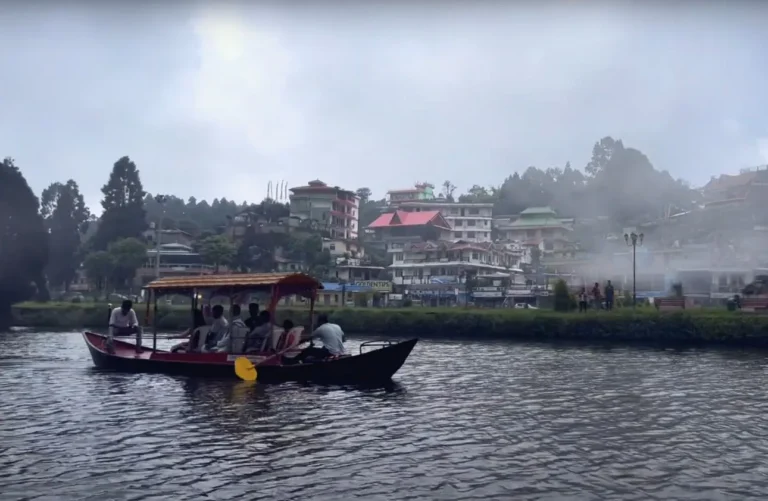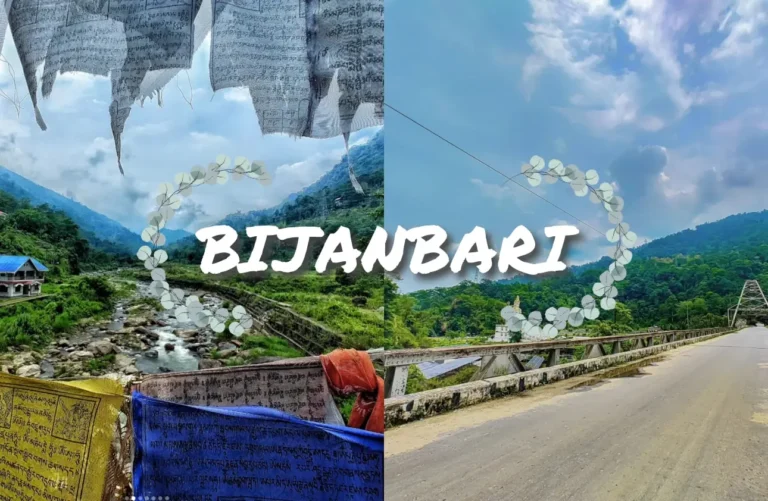Ultimate Guide to Gurudongmar Lake, North Sikkim

Imagine a shimmering blue lake surrounded by snow-capped peaks, so high up in the Himalayas that it feels like you’ve stepped into the clouds. Gurudongmar Lake is not just a sight to behold—it’s a place that stirs the soul with its otherworldly beauty and sacred significance.
Gurudongmar Lake, located in the northern part of Sikkim near the Tibetan border, sits at a breathtaking altitude of 17,800 feet, making it one of the highest lakes in the world. This pristine glacial lake, framed by towering mountains and steeped in spirituality, is revered by Buddhists, Sikhs, and Hindus alike.
Its crystal-clear waters and tranquil ambience make it a must-visit destination for adventurers and pilgrims seeking natural splendour, peace, and divine connection. It holds a special place in the heart of Sikkim’s thriving tourism industry, making it one of the most iconic destinations, attracting visitors from all over the world.
Additionally, Gurudongmar Lake has become a highlight of high-altitude trekking routes, and its remote location offers a sense of serenity and isolation that travellers crave.
How to Reach Gurudongmar Lake
Travel Route from Gangtok: The journey to Gurudongmar Lake typically starts from Gangtok, the capital of Sikkim. The route passes through key stops like Lachen and Thangu Valley, offering scenic views and a glimpse into the region’s unique culture.
- Best Modes of Transport: Travelers can hire private taxis or opt for shared jeeps from Gangtok. A sturdy 4×4 vehicle is recommended due to the challenging terrain.
- Travel Time and Distance: The total distance from Gangtok to Gurudongmar Lake is around 174 kilometres and usually takes about 8-10 hours by road, depending on weather conditions.
Journey to Gurudongmar Lake: Key Stops and Travel Tips
- Starting Point: Gangtok, the gateway to Sikkim, serves as the main starting point for the journey to Gurudongmar Lake.
- Key Stops: Important stops along the way include Lachen, where most travellers stay overnight, and Thangu Valley, where acclimatization is necessary due to the high altitude.
- Travel Tips:
- Ensure that all necessary permits are secured before starting the trip.
- Acclimatization is crucial as the high altitude can lead to discomfort, so taking it slow is essential.
Must Read: 12 Best Tourist Places to Visit in Sikkim
Permits and Permissions
To visit Gurudongmar Lake, both Indian and foreign travellers need specific permits due to its proximity to the international border.
- For Indian Travelers:
- Documents Needed: A Protected Area Permit (PAP) is required.
- Documents Needed: A government-issued ID (Aadhar card, voter ID, passport, or driver’s license) & Two passport-sized photographs.
- For Foreign Travelers: Foreigners need an Inner Line Permit (ILP) and a Protected Area Permit (PAP)
- Documents Needed: Passport with a valid visa & Two passport-sized photographs.
Procedure: Permits can be obtained from the Tourism and Civil Aviation Department in Gangtok, or through a registered travel agent in Gangtok. Travellers need to carry identification documents like Aadhar cards or passports along with passport-sized photos.
Important Tips:
- Ensure you have copies of your ID and photos ready when applying.
- Foreigners should confirm with their travel agent about restricted access beyond Lachen.
- Note: Travellers must apply at least one day before the journey.
Best Time to Visit Gurudongmar Lake
The best time to visit Gurudongmar Lake is during the months of April to June and October to November, when the weather is favourable, and the roads remain open.
During these periods, the skies are generally clear, offering stunning views of the surrounding snow-capped mountains and allowing for a safe, comfortable journey.
Weather and Conditions by Season:
- Spring (April to June): This is one of the most popular times to visit, as the weather is relatively mild. Temperatures range from 5°C to 15°C, making the trek to the lake pleasant. The snow has melted in most areas, revealing vibrant landscapes.
- Autumn (October to November): After the monsoon, the skies clear up, offering crisp, cool weather, with temperatures ranging from 1°C to 10°C. This is another great time to visit, with minimal weather disruptions and fresh, post-monsoon beauty.
Recommended Months:
- April to June: Best for pleasant weather and vibrant scenery.
- October to November: Ideal for clear skies and cooler temperatures, making the journey easier and more comfortable.
Weather Challenges and Accessibility Issues:
Things to Avoid (certain times and conditions can make travel difficult or dangerous):
- Winter (December to March): Harsh winter conditions, with heavy snowfall and temperatures plunging below -20°C, make the area inaccessible. Roads are often blocked by snow, and it’s not safe to travel during this period.
- Monsoon Season (July to September): The monsoon brings heavy rainfall, leading to landslides and muddy roads, making travel risky and difficult. It’s best to avoid visiting during this season due to potential road closures and safety concerns.
Essential Packing List:
- Warm clothing appropriate for high-altitude environments.
- Necessary gear for trekking and outdoor activities.
By planning your visit during the ideal seasons and avoiding harsh weather conditions, you can make the most of your trip to the amazing Lake and enjoy its beauty without any major travel disruptions.
Experiences at Gurudongmar Lake
Gurudongmar Lake is renowned for its breathtaking landscape and scenic views, making it a paradise for photographers and nature lovers. Surrounded by majestic snow-capped peaks, the lake’s pristine waters reflect the beauty of the Himalayas, creating picture-perfect moments at every turn.
Scenic Highlights:
- Himalayan Backdrop: The towering mountains create a stunning backdrop, especially during sunrise and sunset when the colours transform the landscape into a breathtaking spectacle.
- Flora and Fauna: The area is home to unique wildlife, including yaks and blue sheep. The diverse flora adds to the charm, providing excellent opportunities for wildlife spotting.
Trekking and Adventure
For adventure seekers, Gurudongmar Lake offers a range of trekking routes that allow visitors to experience the rugged beauty of the Himalayas up close.
- Trekking Routes: Explore various trails leading to the lake, with options suitable for different skill levels.
- Tips for Acclimatization: Given the high altitude, it’s essential to take the time to acclimatize. Gradual ascent and staying hydrated are key to a safe and enjoyable trek.
Activities and Experiences
Engaging with the natural environment and local culture enhances the experience at Gurudongmar Lake.
- Photography Tips: Capture the best shots of the lake by visiting during golden hours—early morning or late afternoon. The interplay of light and shadow on the mountains and water creates stunning visuals.
- Local Culture: Interact with local communities to learn about their traditions and way of life. Consider staying in homestays to experience the warmth of local hospitality.
Historical and Cultural Significance
Gurudongmar Lake holds profound religious importance for both Buddhists and Sikhs, making it a sacred site worth exploring.
- Religious Importance: The lake is revered by various faiths, with rituals and prayers often conducted here.
- Legends and Myths: Local legends, including the story of Guru Padmasambhava, add a mystical layer to the lake’s allure.
Accommodation
For those planning to stay overnight, Lachen offers several accommodations ranging from guesthouses to homestays, providing a comfortable base for your adventures.
Health Precautions
- Altitude Sickness: Be aware of the symptoms of altitude sickness and take necessary precautions. Familiarize yourself with medical facilities available in North Sikkim in case of emergencies.
- Plan for altitude sickness prevention and familiarize yourself with nearby medical facilities.
- Packing Essentials: Prepare for high-altitude conditions by packing suitable clothing, gear, and personal items. Essentials include warm clothing, sunscreen, and a first-aid kit.
Short Itinerary for a Gurudongmar Lake Trip from Gangtok
Day 1: Gangtok to Lachen (Approx. 107 km | 6-7 hours)
- Start early from Gangtok (around 8 AM).
- En route, visit Seven Sisters Waterfall and Naga Waterfall.
- Reach Lachen by evening. Overnight stay in Lachen.
Day 2: Lachen to Gurudongmar Lake to Lachung (Approx. 240 km round trip)
- Depart from Lachen at 4 AM to reach Gurudongmar Lake (Approx. 70 km | 3-4 hours).
- Spend around 30 minutes at the lake (avoid prolonged stays due to high altitude).
- Return to Lachen for lunch.
- Continue to Lachung (Approx. 50 km | 2-3 hours). Overnight stay in Lachung.
Day 3: Lachung to Yumthang Valley to Gangtok (Approx. 118 km | 6-7 hours)
- Visit Yumthang Valley in the morning (approx. 24 km from Lachung).
- Optionally, visit Zero Point (subject to permits and conditions).
- Begin the return journey to Gangtok in the afternoon, reaching by evening.
Conclusion

Gurudongmar Lake is undoubtedly a must-visit destination in North Sikkim, offering breathtaking natural beauty, rich cultural significance, and unforgettable adventures. Its stunning landscapes, diverse wildlife, and sacred atmosphere make it a unique place for travellers seeking both serenity and excitement.
In this blog post, we explored the lake’s stunning scenery, ideal seasons for visiting, adventure opportunities, and its cultural importance. From the vibrant flora and fauna to the thrilling trekking routes, Gurudongmar Lake promises an enriching experience for every traveller.
We’d love to hear from you! Share your thoughts or experiences visiting Gurudongmar Lake in the comments below. Your stories can inspire others to embark on this incredible journey!
Must Read: Paragliding In Gangtok, Sikkim






